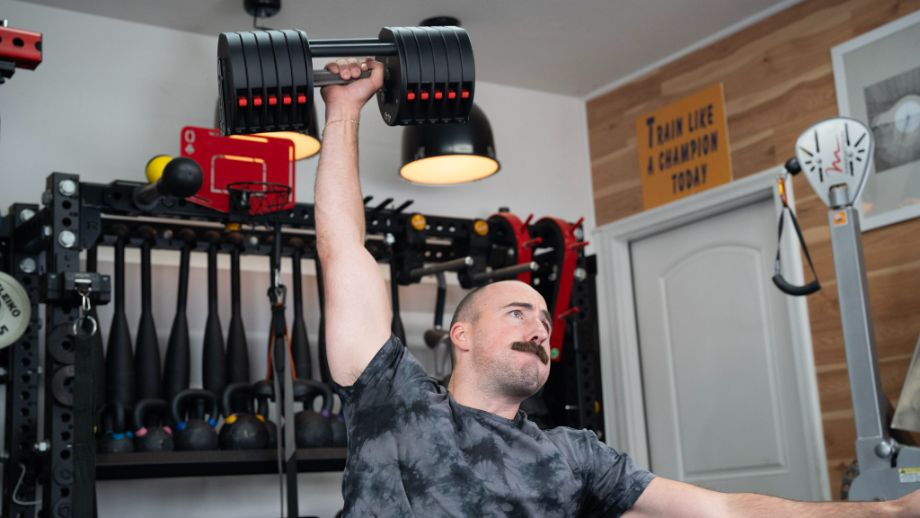We test and review fitness products based on an independent, multi-point methodology. If you use our links to purchase something, we may earn a commission. Read our disclosures.
There are several bodybuilding exercises you see performed in every gym across the world. These include bench presses, deadlifts, squats, rows, lat pulldowns, and more. Although—as a longtime trainer—I love all of these, there’s more out there to build muscle, strength, speed, and power. One exercise that stands out is a popular CrossFit exercise—the dumbbell snatch (also called the db snatch).
“Why?” I can almost hear you ask. Well, today, I’ll show you why. I’ll start by explaining how to do the exercise with proper form before moving on to the benefits of this full-body exercise. After this, I’ll review some variations if the dumbbell version is too difficult. In no time, you’ll be working every muscle group in the body with just one exercise. Let’s get started!
RELATED: Full-Body Dumbbell Workout
How to Do The Dumbbell Snatch Exercise
Muscles worked: Quads, hamstrings, glutes, hips, shoulders, upper back, biceps, triceps, core
How to do it:
- Place a single dumbbell on the floor in between your legs. You’ll want your feet to be hip-width apart and your toes pointing slightly outwards.
- Squat down and take hold of the dumbbell with your left hand, ensuring that your chest is lifted and your head is neutral.
- Brace your core and stand up by driving your feet into the ground, keeping the dumbbell close to your body.
- When the dumbbell reaches your thighs, explode upward and allow the dumbbell to move toward the ceiling. Continue until your left arm is extended overhead. At the same time, get into the squat position, stabilizing the dumbbell.
- While keeping your left arm in the lockout position, stand up. Drop the dumbbell to the ground in a controlled manner to finish the rep.
- Continue for repetitions before switching to the opposite side.
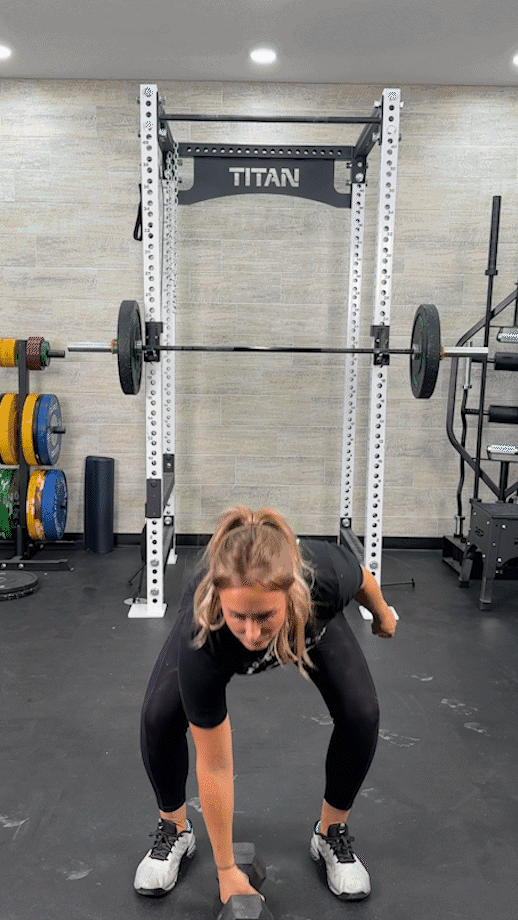
Note: Although I’ve mentioned performing this as an isolation exercise (or exercising one arm at a time before moving to the other side), you can also do alternating dumbbell snatches where you change between the left and right hand after every rep.
RELATED: Best Dumbbells
Trainer Tips for Form
To dial-in your dumbbell snatch form, there’s plenty to think about to make this exercise as smooth as possible. Here are three tips I share with my clients when demonstrating this strength-training movement:
Keep the Dumbbell Close to You
First, you’ll want to keep the dumbbell close to your body throughout the movement. When you do the initial pull (lifting the dumbbell to your thighs), it can be tempting to swing the dumbbell out in front of you. This makes the snatch element harder and can put unnecessary pressure on your lower back. Starting with the dumbbell inside your legs can help.
Maintain A Straight Line With Your Arm
At the top of the movement with the dumbbell overhead, you’ll want your bicep as close to your ear as possible. You don’t want to catch the dumbbell in front of you or out to the side because this may cause strain on your shoulder joints. Additionally, your shoulders will tire quickly, and you won’t be able to push as many reps with the single-arm dumbbell snatch as you’d like.
Get Into a Full Squat Position
Although you can finish the movement in a partial squat position, I believe that you’re doing your gains a disservice if you do this. Your lower body will get worked to a greater extent if you finish in a full-squat position, and then stand up. If you’re new to the snatch exercise, you may need some time to practice this so it’s fluid, but that’s fine. Remember, Rome wasn’t built in a day.
RELATED: How to Do the Back Squat
Dumbbell Snatch Benefits
There are many benefits to performing dynamic and explosive exercises like the dumbbell snatch. Here are my top three callouts:
Hits Every Major Muscle Group
Yes, you read that right. The dumbbell snatch activates every major muscle group in the body. It works your quads, hamstrings, glutes, shoulders, back, arms, and core. There aren’t many exercises like it, which is why I believe it earns a spot in every weightlifting routine (and shouldn’t be limited to CrossFit workouts).
RELATED: Best CrossFit Apps
Easier for Beginners
There’s a bit of a learning curve when it comes to compound exercises like the snatch. However, dumbbell exercises are often easier for beginners compared to barbell exercises. For example, the dumbbell goblet squat is an easier variation of the traditional barbell squat. The same goes for the dumbbell snatch when comparing it to the barbell snatch. The dumbbell version is easier to learn and can be a good choice if you’re new to the concept of snatching.
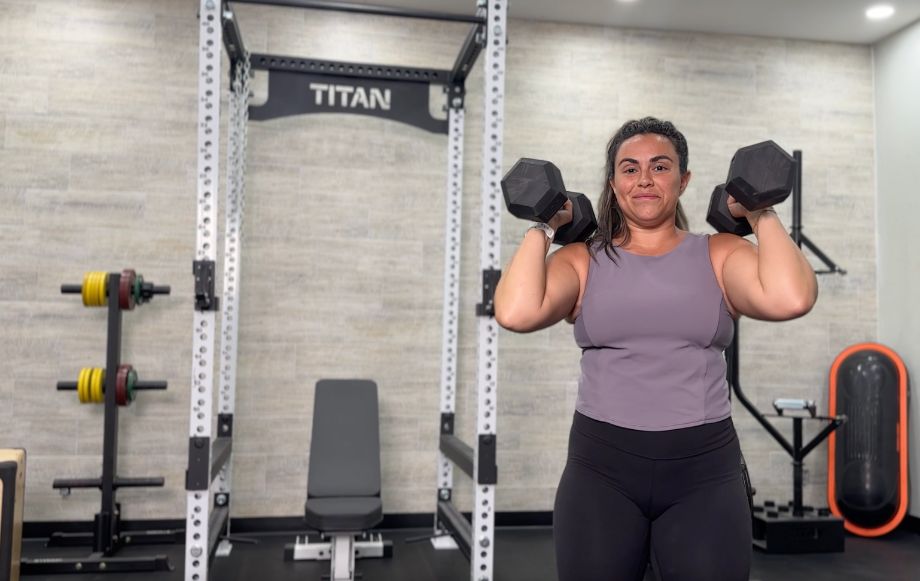
May Fix Muscular Imbalances
A 2008 study conducted by the Journal of Strength and Conditioning Research1 compared the unilateral snatch exercise with the bilateral snatch exercise. It found that the unilateral snatch (i.e. the single-dumbbell snatch) provides a different training stimulus for athletes. More specifically, you may be able to fix muscular imbalances because each side has to do the work by itself.
RELATED: Unilateral Exercises
How to Program the Dumbbell Snatch
Okay, so you appreciate the benefits of the dumbbell snatch, and you’re ready to start. Hold your horses! You’ll need to know how many sets and reps to do first. Programming the dumbbell snatch depends on your goals.
Here are my recommendations:
- For strength gains, do 2-6 sets of 1-5 reps at a heavy weight
- To gain muscle, aim for 3-6 sets of 6-12 reps
- For muscular endurance, go for 2-3 sets of 15+ reps
For more details on programming, check out our article on how many reps to build muscle. Alternatively, you can include the dumbbell snatch in a high-intensity interval training workout.
Combine it with exercises such as burpees, kettlebell swings, push-ups, jump squats, and more to reap the cardio benefits.
Common Dumbbell Snatch Mistakes
Now you know how to program the dumbbell snatch, here are three common mistakes I often see with this exercise. And more importantly, how you can avoid them:
Not Exploding Upwards
The heels don’t need to leave the floor with the dumbbell snatch—if they did, this would be the dumbbell power snatch. However, it’s still an explosive exercise to help you build speed, power, and strength. Don’t make the mistake of not exploding upwards once the dumbbell reaches your thighs. It’s an advanced movement for a reason!
RELATED: Explosive Workouts
Pulling the Dumbbell Too Early
Contrary to popular belief, the dumbbell snatch is a lower-body movement more than an upper-body movement. Your arms are there primarily to hold the dumbbell rather than do the bulk of the work. You may be tempted to start the dumbbell pull too early, but this can make the movement less effective. Transfer the weight to your upper body once the dumbbell passes your waist, not before.
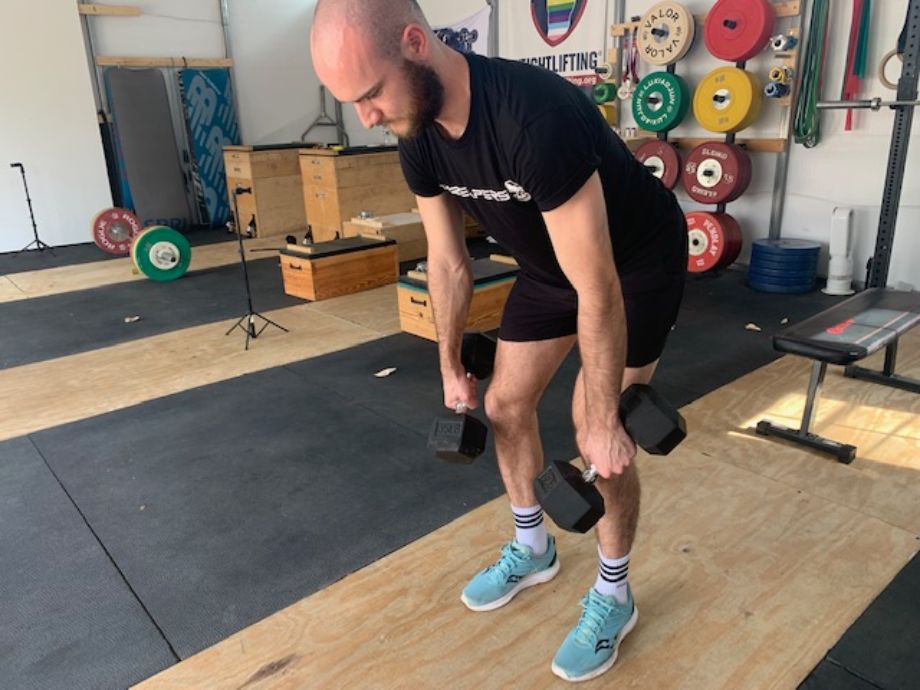
Not Resetting After Each Rep
Once you finish the rep and place the dumbbell on the floor, try not to rush into the next rep. It’s not a race. There’s a good chance that you won’t be in the correct starting position. Take a moment to make sure that your feet are hip-width apart, the dumbbell is inside your legs, your core is braced, and your chest is up. This may also reduce your risk of getting injured.
Dumbbell Snatch Variations/Alternatives
Although the dumbbell snatch is a fantastic full-body strength exercise, there are many reasons why you may want alternatives. You might not have access to a dumbbell and or wish to use one of the best kettlebells instead. Or, you may have outgrown the dumbbell version and want to try the barbell snatch to see how you get on.
Alternatively, a previous shoulder injury may limit your ability to lift any weight overhead. Here are four dumbbell snatch variations:
Barbell Snatch
Why do it: The barbell snatch is an Olympic lift, and a more advanced version of the dumbbell snatch. It can help to build muscle, strength, coordination, mobility, grip strength, and more. I recommend it because it activates pretty much every muscle in the body.
How to do it:
- Load the barbell, then get underneath it with your feet hip-width apart and toes pointing outwards. You’ll want the bar to be touching your shins.
- Hinge at your hips to grab the bar with either an overhand or hook grip. Your hands should be outside your legs, wider than a regular deadlift grip.
- Lift the bar off the floor by pushing your heels into the ground, keeping your core engaged and chest up.
- When the barbell gets past your knees, pop your hips forcibly. You’ll want to pull the bar towards the ceiling with your arms until it’s stabilized overhead.
- Get into the full squat position beneath the bar at the same time as the above step.
- Stand up, keeping your arms extended overhead. Then, drop the barbell to your shoulders and back onto the ground.
- Keep snatching for repetitions.
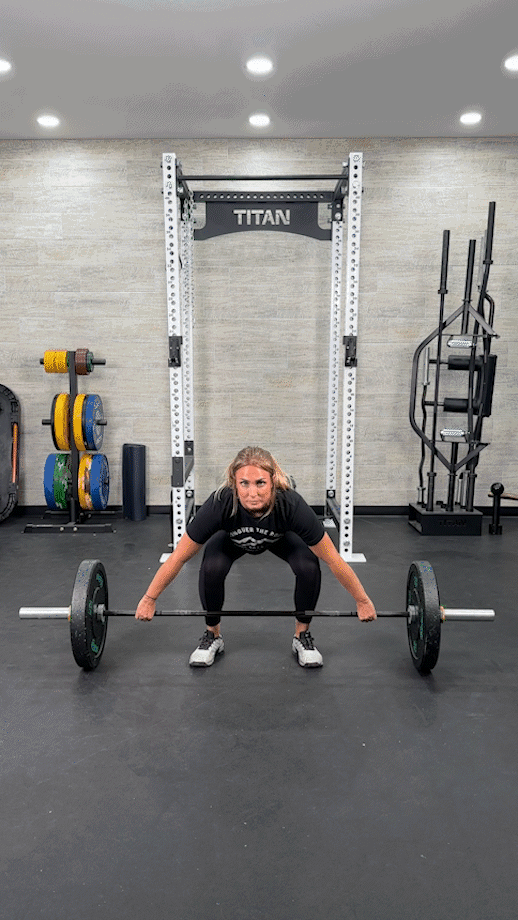
Kettlebell Snatch
Why do it: If you don’t have access to a dumbbell, no worries! You can use a kettlebell instead. The kettlebell snatch is a slightly more advanced alternative, but you still get the benefit of fixing muscular imbalances because you’re exercising one side at a time.
I’d suggest learning basic kettlebell exercises first, such as kettlebell overhead press or kettlebell swing.
How to do it:
- With your feet hip-width apart, place a kettlebell on the ground between your legs.
- Squat down and grab the kettlebell with your left hand. You’ll want the kettlebell handle to be pointing diagonally.
- Lift the kettlebell slightly off the floor. Brace your core, keep your chest up, and then, to create momentum, swing the kettlebell backward.
- Drive your heels into the ground and your hips forward to stand, moving the kettlebell towards the ceiling. Use your lower body until the kettlebell clears your waist.
- When the kettlebell reaches shoulder height, flip it over your hand until your left arm is fully extended. Squeeze your glutes at the top of the movement.
- Reverse the motion by slowly bringing the kettlebell to the floor.
- Repeat for reps, then switch to the right side.
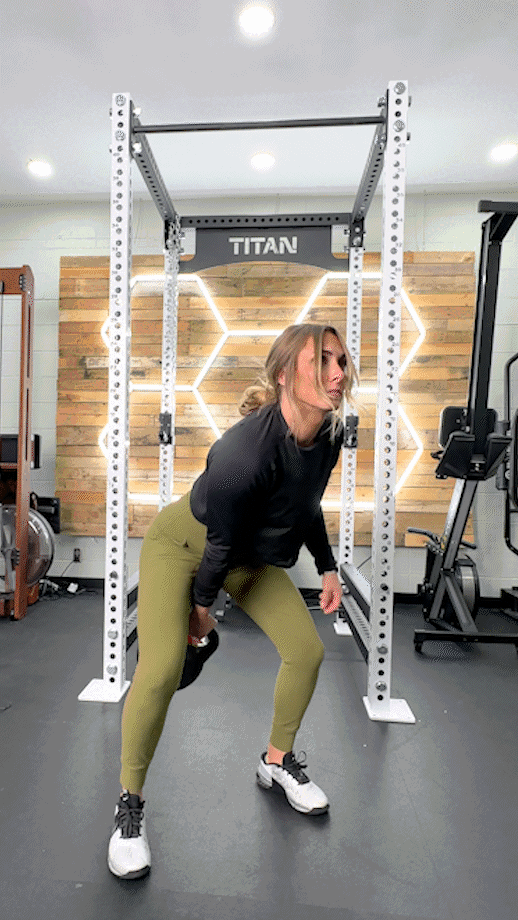
Snatch High Pull
Why do it: If you’ve had a shoulder injury in the past that limits your ability to lift weight overhead, the snatch high pull could be a great alternative. That’s not all, however. Those finding the snatch technique difficult could benefit from breaking it down and doing the snatch high pull. You might find that regularly doing this exercise may benefit your snatch.
How to do it:
- Add the necessary weight plates to the bar. Step underneath with your feet hip-width apart so the bar covers your shoelaces.
- Hinge at your hips to grab the bar with your hands outside of your legs. You’ll want them wider than you would with a traditional deadlift.
- Activate your core, keep your head neutral, and then push through your heels to bring the bar to your pelvic region.
- Drive your hips backward and bend your knees until the bar is close to your knees.
- From here, push your hips forward and pull the bar to shoulder height. Pause before slowly bringing the barbell back to your pelvic region, and then down to your knees.
- Keep going for repetitions.
Note: The above is the barbell version of the snatch high pull, which is the most common. If you want to get better at the dumbbell snatch, you can replace the barbell with a single dumbbell instead. Or, you can use a kettlebell.
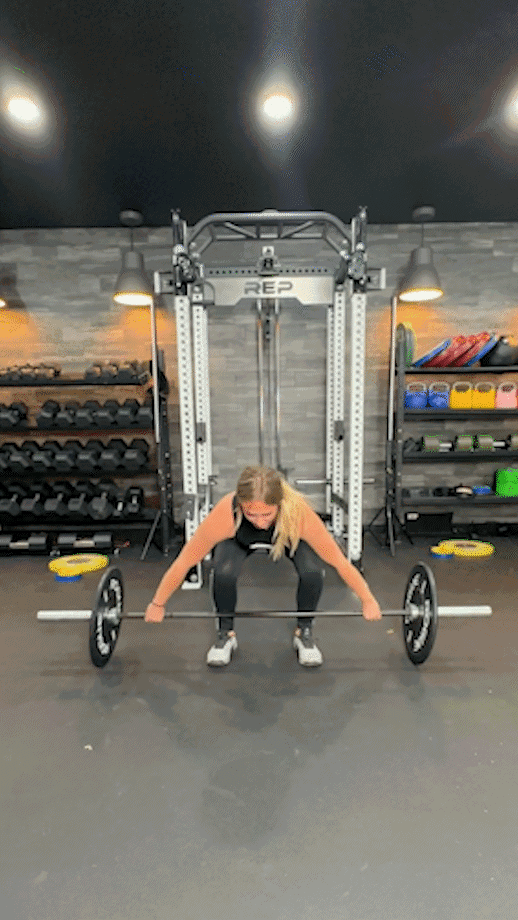
Dumbbell Clean and Press
Why do it: Similar to the dumbbell snatch, the dumbbell clean and press hits every major muscle group in the body. They may look alike (and you’ll end up in the same position at the end), but the main difference is that you pause the weight at your shoulders before pressing overhead.
How to do it:
- Take hold of a pair of dumbbells while standing tall, one in each hand. Your arms should be down by your sides.
- Hinge at your hips so the dumbbells are close to, but not touching, the floor.
- Ensure that your core is braced and your chest is up, then drive your feet through the floor to stand up. At the same time, pull the dumbbells toward your shoulders.
- Press both arms overhead until they’re fully extended. Slowly return to the starting position.
- Repeat for reps.
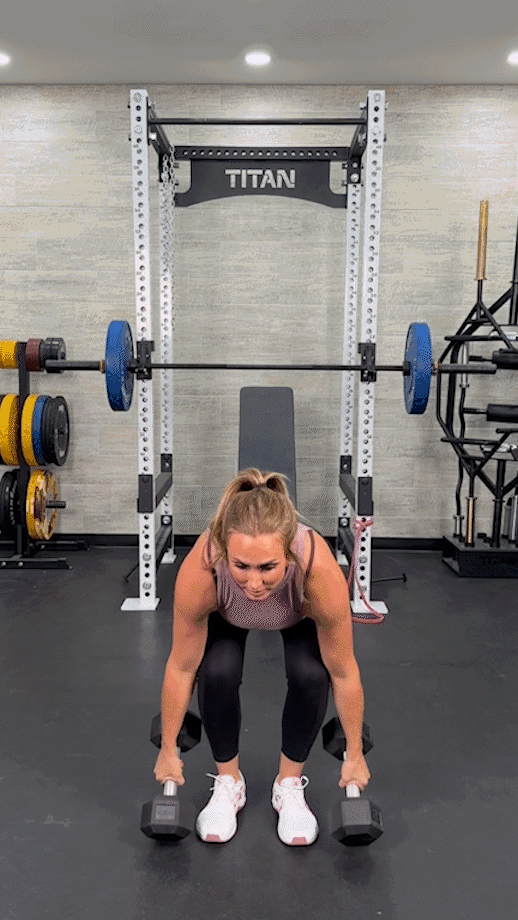
Dumbbell Snatch: FAQs
What muscles do snatches work?
Snatches work nearly every major muscle group in the body, including the quads, hamstrings, glutes, shoulders, back, biceps, triceps, and core. Because they hit multiple muscles, they’re known as a compound movement.
Can you do a dumbbell snatch with two dumbbells?
Technically, yes, you can do the dumbbell snatch with two dumbbells. It’s similar to the single dumbbell snatch, but instead of placing one dumbbell on the floor, you’ll place two.
I’ve tried the dumbbell snatch with two dumbbells and didn’t like it. So I’d suggest that if you want to work both sides of your body simultaneously, aim for the barbell snatch exercise.
Should beginners do the dumbbell snatch?
In my professional opinion, you shouldn’t be doing the dumbbell snatch if you’re new to lifting weights. This is because there are easier exercises to learn that are also effective. However, if you’ve been lifting weights for some time and want to learn more advanced movements, such as snatches, the dumbbell snatch is a great place to start. It’s more beginner-friendly compared to the barbell version.
Reference
- Lauder, Mike A; Lake, Jason P. Biomechanical Comparison of Unilateral and Bilateral Power Snatch Lifts. Journal of Strength and Conditioning Research 22(3):p 653-660, May 2008. | DOI: 10.1519/JSC.0b013e3181660c89
Further reading

Exercise bike vs treadmill: Which machine is better to help you meet your fitness goals? Read more

Got spare parts laying around from some of your fitness equipment? Consider building your very own DIY lat pulldown machine. Read more

A certified personal trainer breaks down what inner chest workout is best for increasing strength and muscle mass. Read more

Check out these trusted workout splits from an expert to guide your fitness routine, including full body, upper/lower-body, and push-pull workouts. Read more

